My first 3D printer was already 10 years ago, with a RepRap that I had to assemble myself. Since then, I've tested a number of models. While the quality and ease of installation have improved considerably, I have to admit that 3D printing was still a bit technical and not yet within the reach of the average person. But new models have appeared in recent months to revolutionize the field. Just imagine: you're sitting comfortably in front of your computer, with a steaming cup of coffee (or tea, I'm not judging), you launch your 3D model and… poof! In the blink of an eye, your creation comes to life before your astonished eyes. No, it's not magic, it's the Bambu Lab X1 Carbon in action!
Initially launched on Kickstarter in May 2022, this printer went viral in the makers' community. And with good reason! It combines speed, precision and ease of use in a package that would make Tony Stark himself green with envy. It's as if someone had taken everything we love about 3D printing and boosted it with superpowers. But make no mistake, the Bambu Lab X1 Carbon isn't just an evolution of existing 3D printers. No, it's a revolution! It pushes back the limits of what was thought possible in home 3D printing. It's a bit like going straight from the rotary phone to the latest-generation smartphone. A technological leap that will make you say “Wow!” at every print. I've been using it for several months now, and it's really given me back the pleasure of printing my own 3D objects, because it's so easy to use. I don't go a week without it running at least once. So, are you ready to take the plunge into next-generation 3D printing? Hold on tight, it's going to be a bumpy ride!
Unpacking the Bambu Lab X1 Carbon: a premium experience right from the start
As soon as you lay eyes on the X1 Carbon box, you know you're in the presence of something special.

The packaging is sturdy, and each element is perfectly wedged in its protective foam. It's like a perfectly executed game of Tetris. No risk of your precious printer being damaged in transit!
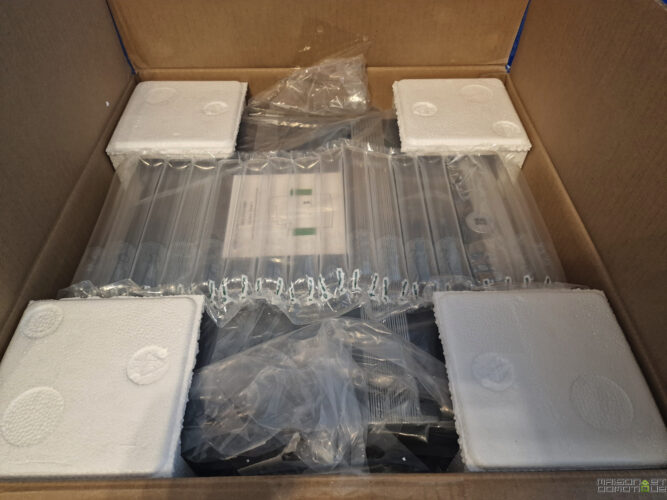
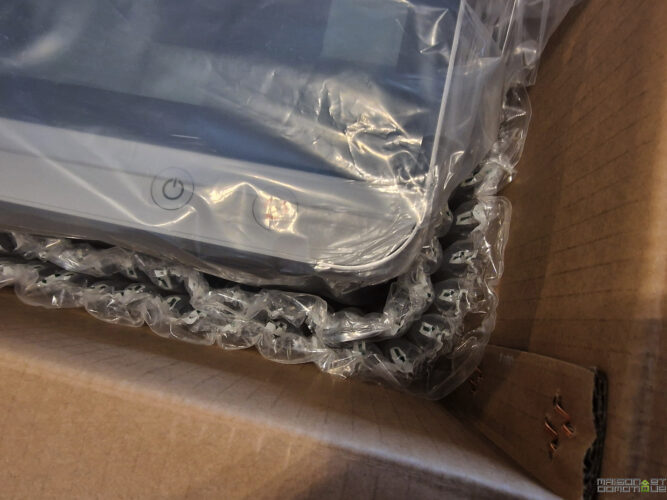
The first thing that strikes you when you take the Bambu Lab X1 Carbon out of its box is its weight. At 13.5 kg, it's got presence! It's reassuringly solid. It's a far cry from plastic 3D printers that move in all directions at the slightest vibration.
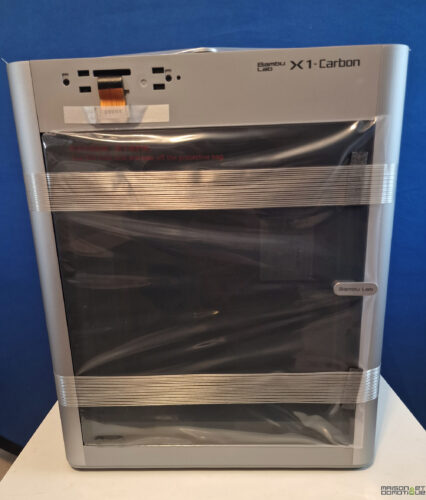
The X1 Carbon's design is a feast for the eyes. Carbon fiber panels give it a futuristic, high-tech look. The aluminum finish adds a touch of class and sturdiness. This is serious stuff, a far cry from toy-like 3D printers.
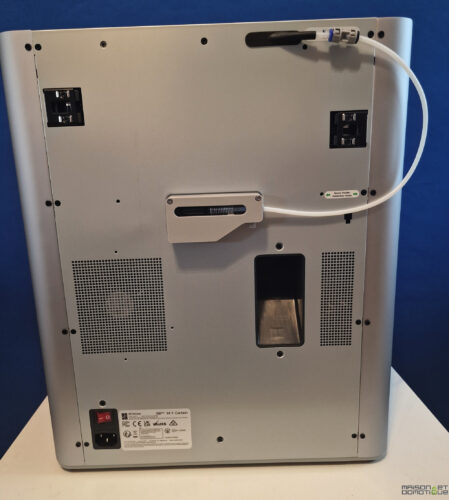
When we mentioned Tetris above, it wasn't for nothing: the AMS, which is responsible for housing the filament spools, is carefully recessed into the 3D printer to make transport more compact:
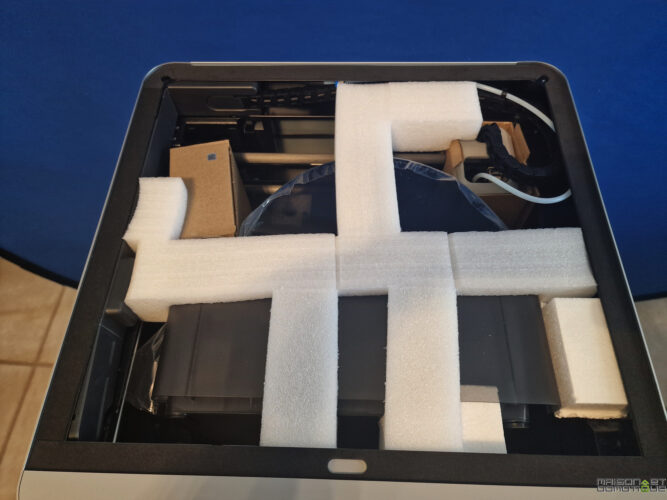
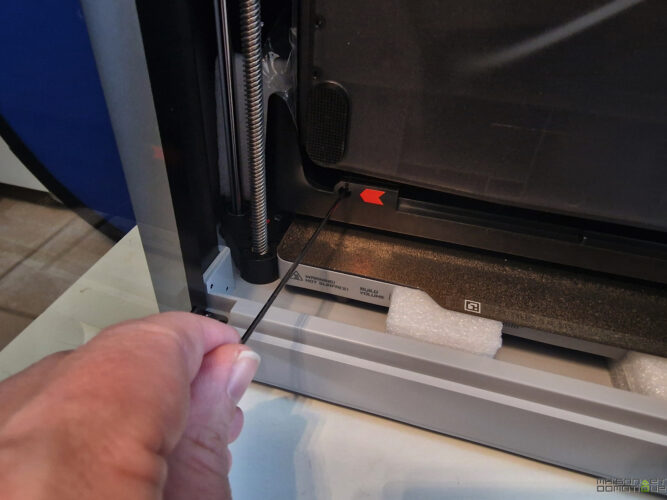
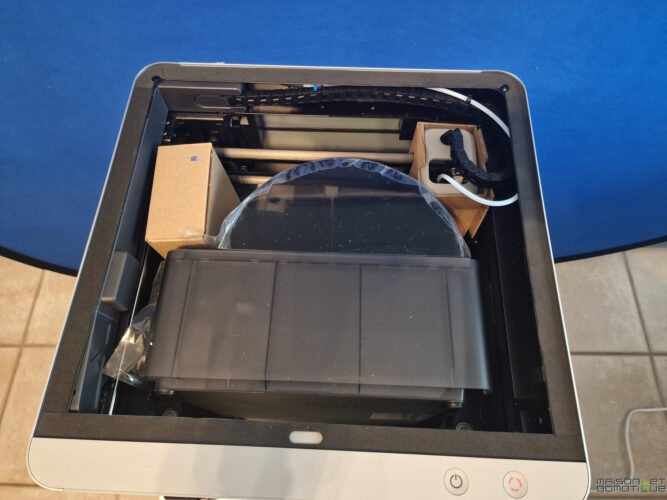
A few screws to remove, the foam to remove, and you can retrieve all the material. Read the instructions carefully to make sure you don't make any mistakes, as there are a few screws to remove, so don't pull! But everything is perfectly explained!
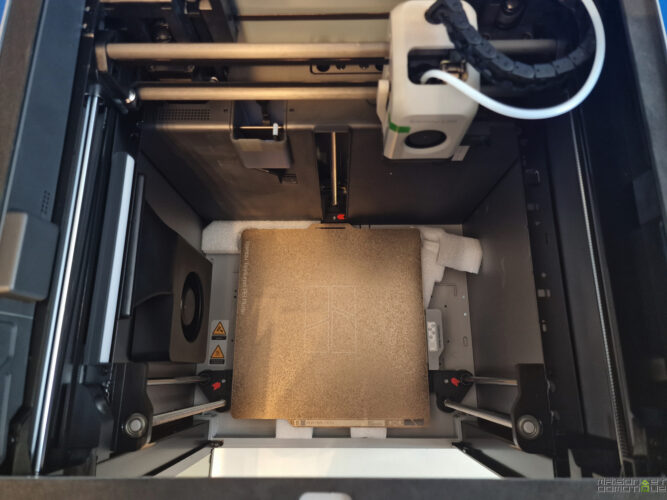
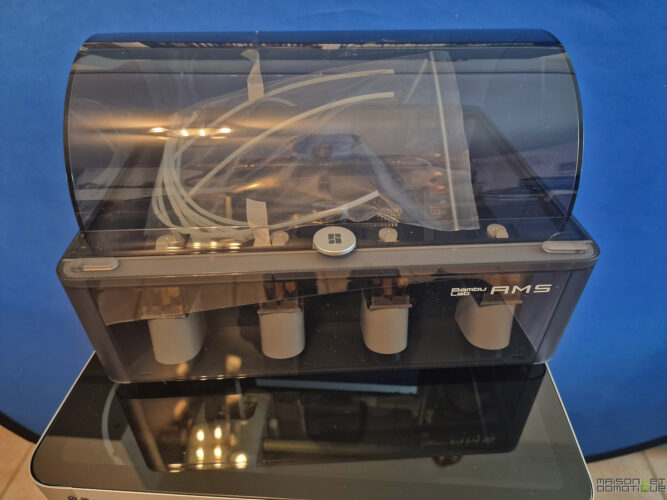
In the box, you'll also find all the accessories you need to start printing straight away. Some sample filaments, maintenance tools, spare parts… Bambu Lab has really thought of everything.
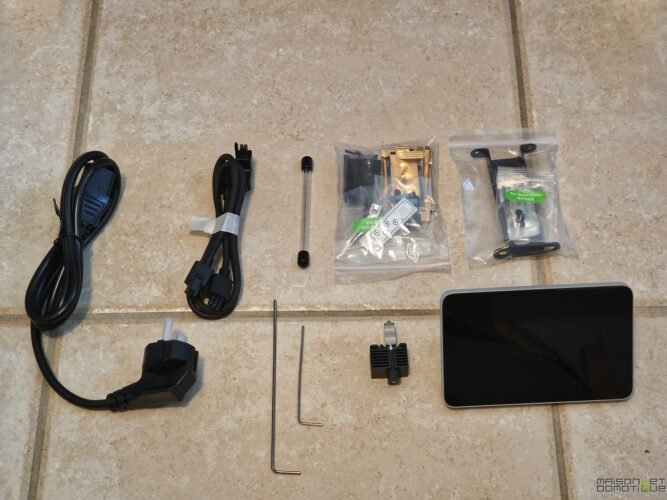
The 5″ touch screen is an immediate eye-catcher. It's big, bright and responsive. It's like having a tablet built into your printer. You'll love navigating menus with it!
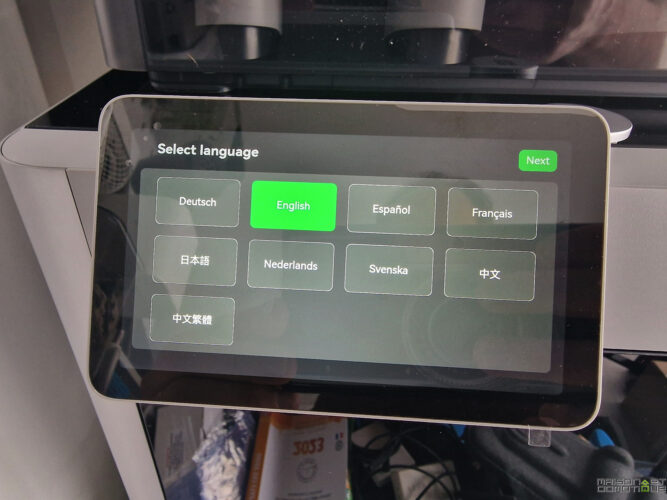
On closer inspection, you'll notice the print head. Compact yet powerful, it looks like a little jewel of technology. And it is! With its planetary-drive extruder and dual-fan cooling system, it promises exceptional performance.
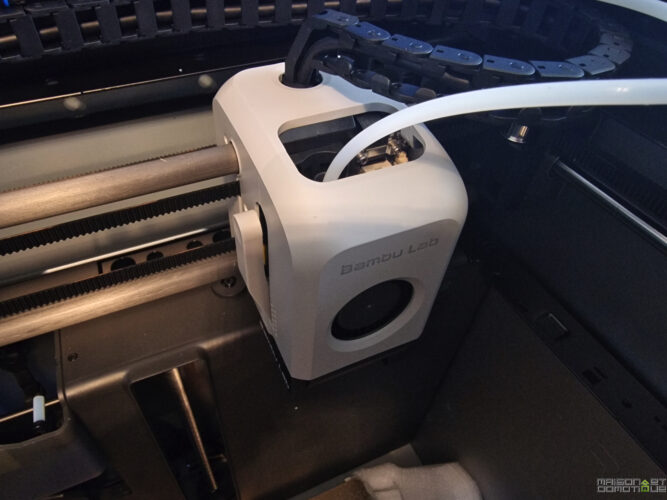
The printing plate is also worth a closer look. Its textured PEI surface gleams softly under the light. This surface ensures perfect adhesion of the 3D print, without the need for lacquer or sticky paper. This detail alone is life-changing! What's more, it's a magnetic plate: it detaches itself from the printer, and its flexibility means that printed parts can be removed very easily.
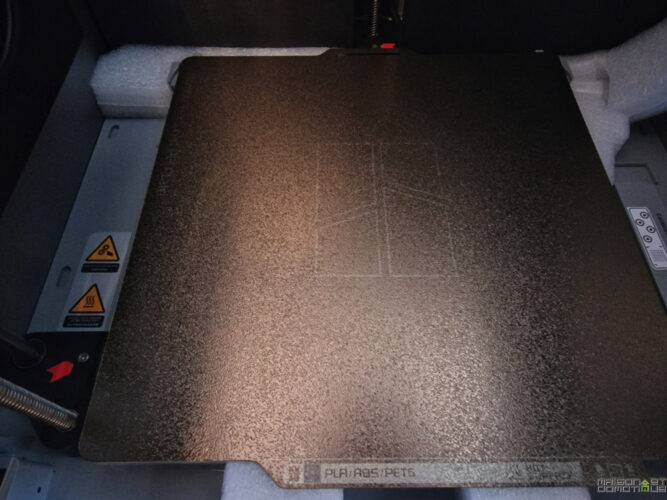
Assembling the Bambu Lab X1 Carbon is child's play. In just a few minutes, your 3D printer is ready for use. No need to be an expert in mechanics or electronics.
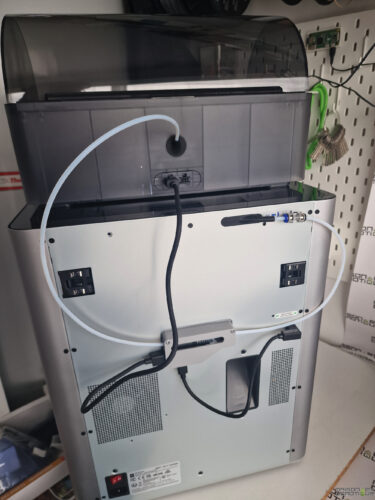
Position the AMS (filament dispenser) on top of the printer (or next to it, depending on the space available), connect the filament tube, power and control cables, and you're ready to go.
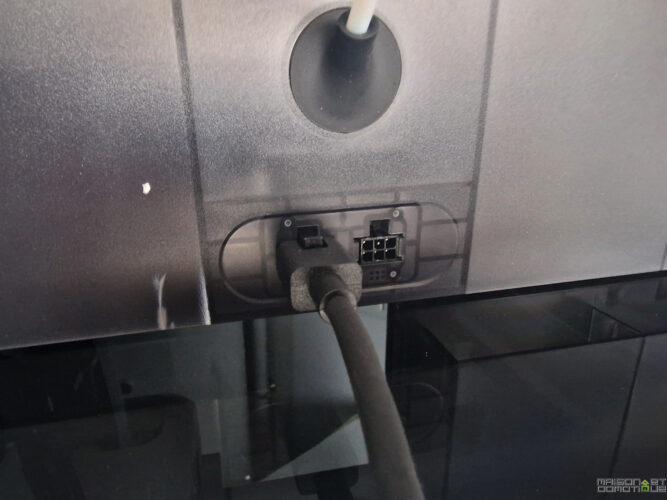
The screen is also fitted, by inserting the small electrical panel:

Once installed, the Bambu Lab X1 Carbon looks great. It wouldn't look out of place in a high-tech laboratory or design studio. This is the kind of 3D printer you want to show off, not hide away in a corner.
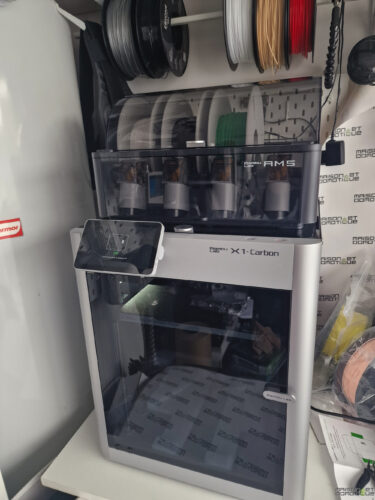
In short, unpacking and presenting the Bambu Lab X1 Carbon is a premium experience that immediately puts you in the mood. You know right from the start that you're holding an exceptional device in your hands. And believe me, that's just the beginning of the adventure!
An impressive concentration of technology
The Bambu Lab X1 Carbon is like the Formula 1 of 3D printers. Its elegant design, with its carbon fiber and aluminum finishes, gives it a resolutely premium look.
But let's start with the basics: the X1 Carbon uses FDM(Fused Deposition Modeling ) technology. But be warned, it's not your usual FDM! Bambu Lab has pushed this technology to the limit to achieve performance worthy of professional printers.
Print volume is 256 x 256 x 256 mm, not bad at all for a desktop printer. You'll be able to print objects the size of headphones with no problem. And the best part? This volume is fully usable thanks to an automatic platen levelling system, which we'll talk about later.
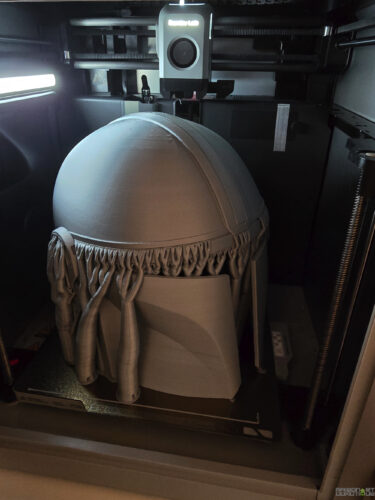
Let's talk about the print head, because this is where the magic happens. The X1 Carbon is equipped with a direct extruder with planetary drive. It may sound barbaric, but in reality, this is what enables it to reach mind-blowing print speeds while maintaining surgical precision.
A planetary drive direct extruder uses a system of planetary gears to provide high torque and precise filament control in 3D printers. This ensures more reliable extrusion and better print quality.
This extruder can reach temperatures of up to 300°C! In other words, even the most temperamental materials don't scare it. PLA, ABS, PETG, nylon, polycarbonate… this printer handles them all like a boss! The speed is nothing short of impressive: to take the example of the Mandalorian helmet, it took me over a week on the printers I've tested so far, with all the risks of failure that entails. Here, it took just 30 hours.
But that's not all! The printhead is also equipped with a dual-fan cooling system. It's like having a high-performance air-conditioning system for your prints. The result? Impeccable overhangs and gravity-defying bridges.
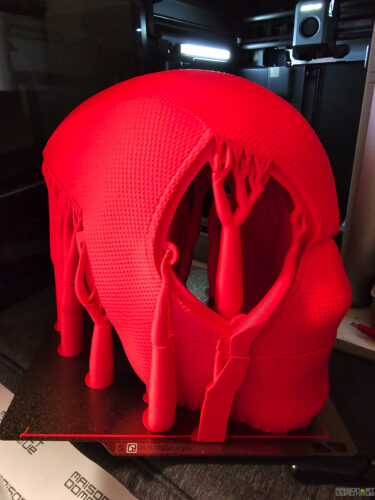
This 3D printer also features a hot chamber, or heated print chamber, a crucial element for high-quality 3D printing, especially of technical materials. Unlike passive chambers, which rely solely on the heat generated by the printer's components, active chambers use a dedicated heating system to maintain a constant, high temperature. This precise thermal control offers numerous advantages: it enables the use of materials with specific mechanical properties, improves print quality and precision by minimizing heat-related distortion, and enhances part strength by promoting better adhesion between layers. For demanding filaments such as ABS, PC or nylon, a heated chamber is even essential. It creates a stable environment that reduces thermal shock, limits deformation and improves adhesion to the platen, guaranteeing successful prints and parts with optimum mechanical properties.
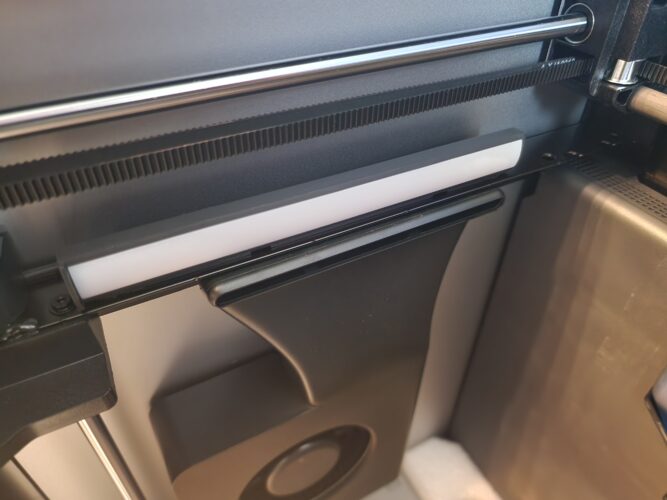
The heated platen is another key element of the Bambu Lab X1 Carbon. It can heat up to 120°C in record time, thanks to its direct mains power supply. It's like having an ultra-fast pizza oven for your 3D prints! This rapid temperature rise, combined with a textured PEI printing surface, ensures perfect adhesion of the first layer, whatever the material used.
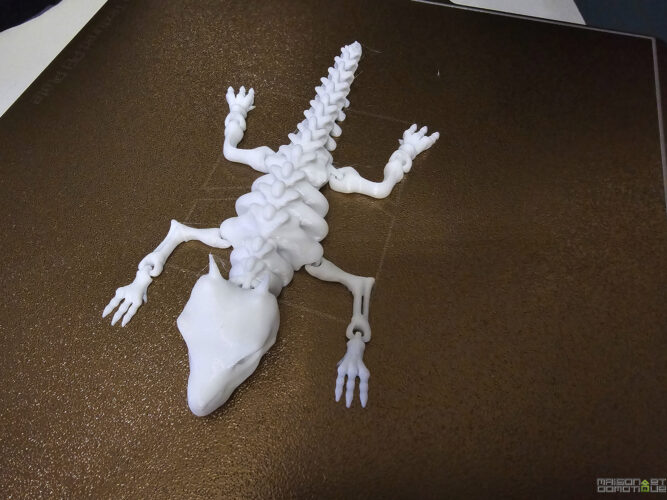
And what about the automatic levelling system? The X1 Carbon uses a LIDAR sensor (yes, like in autonomous cars!) to scan the printing surface and create a precise map of irregularities. It's like having a miniature topographer making sure your printing terrain is perfectly flat before each print. No more problems with the first layer not sticking!
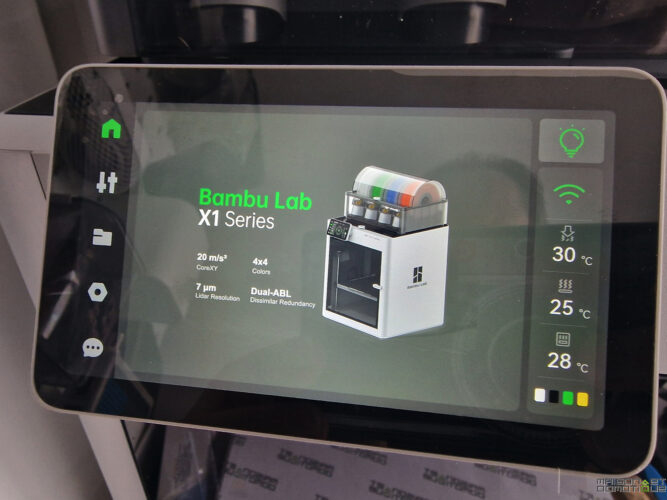
The 5″ touch screen is the icing on the cake. Fluid, responsive and intuitive, it lets you control every aspect of your print job at your fingertips. You can even preview your 3D model before printing!
But the Bambu Lab X1 Carbon would be nothing without its AMS(Automatic Material System), which is a real revolution for multi-color, multi-material 3D printing. This ingenious system manages up to 4 different filaments per unit, with the possibility of connecting up to 4 AMSs for an impressive total of 16 colors or materials!
No more printing interruptions to change spools! The AMS ensures a smooth transition between filaments, minimizing waste and guaranteeing uninterrupted printing. But that's not all: equipped with humidity sensors and a watertight casing, it keeps your filaments dry, which is particularly useful for technical materials such as nylon or polycarbonate.
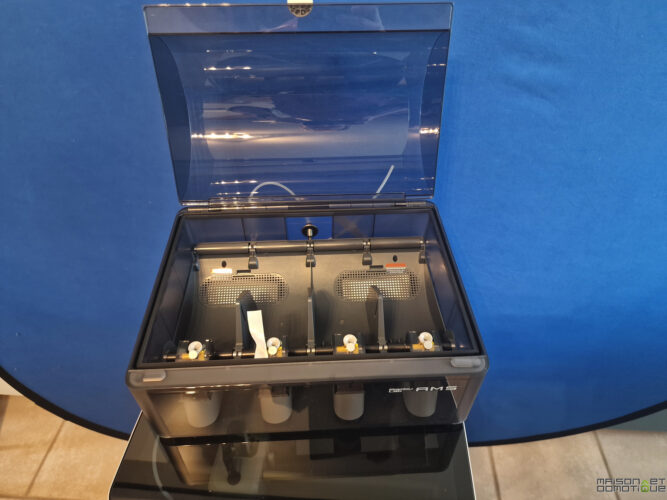
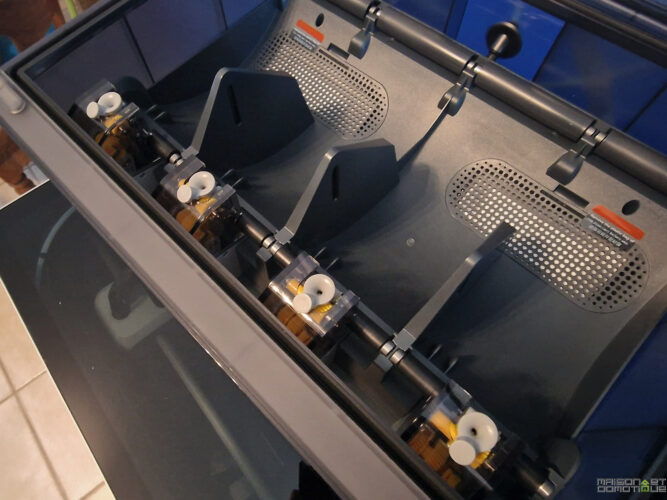
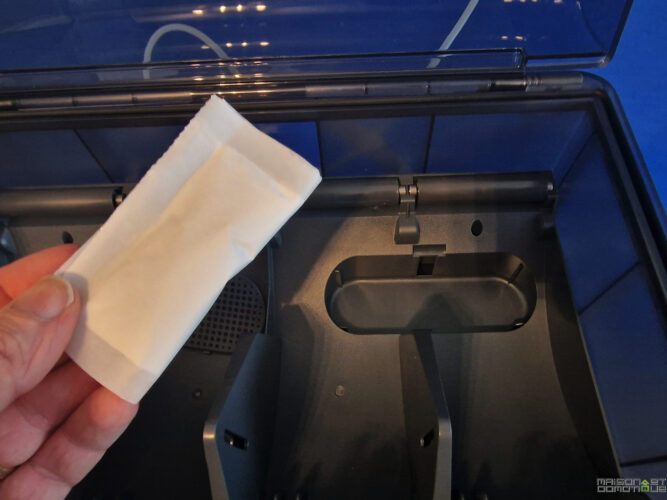
The AMS is compatible with a wide range of materials, from PLA and PC to ABS and PETG, paving the way for stunning multi-colored creations and the use of soluble supports to facilitate post-processing.

If you use the manufacturer's official spools, an Rfid chip enables the printer to recognize them automatically as soon as they are inserted: it will know what type of material it is, its heating temperature, its color, etc. But it's still possible to use any type of spool. But it's still possible to use any other reel, simply by entering the information manually on the screen.
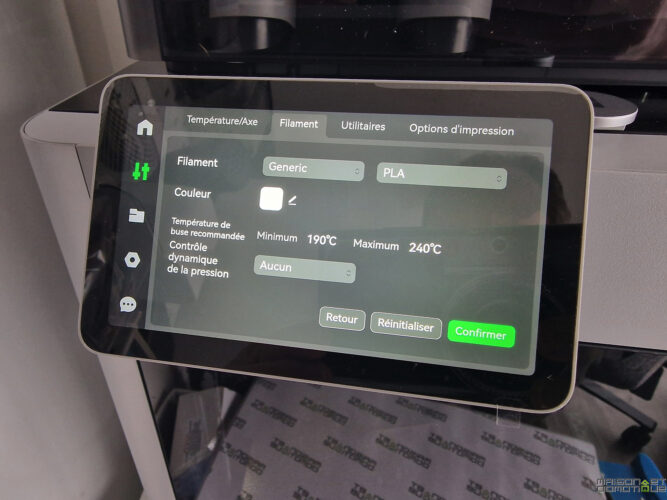
With the AMS, Bambu Lab transforms 3D printing into an art form accessible to all!
Finally, let's talk about connectivity. The Bambu Lab X1 Carbon is equipped with Wi-Fi and Bluetooth. So you can control it remotely via a mobile app or web browser. Adding it to the mobile app is a simple matter of flashing a QRCode:
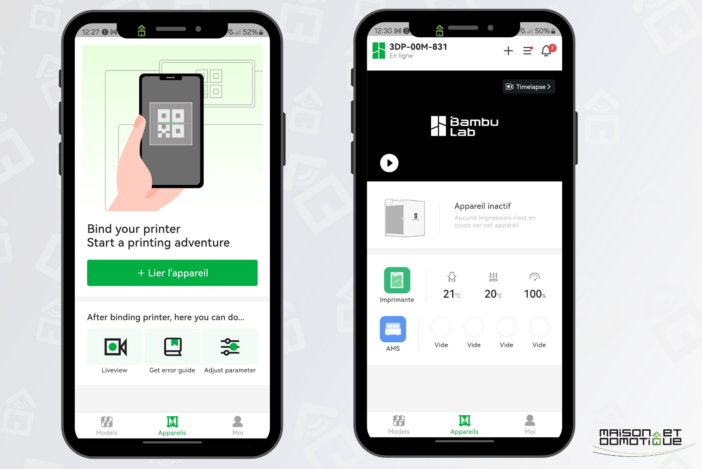
You can then launch a print job, and monitor it remotely via the camera:
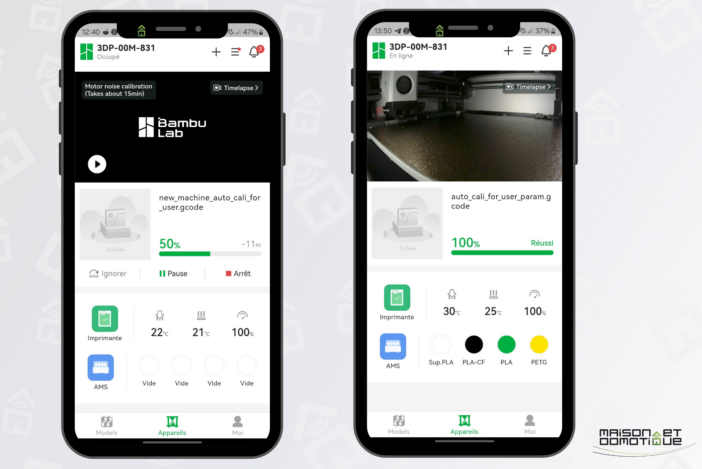
Notifications are also included, so you can be alerted to the slightest problem, or simply to the end of printing.
Bambu Lab X1 Carbon performance: a record-breaking printer
Hold on to your hats, because the performance of the Bambu Lab X1 Carbon will make your head spin! Let's start with speed, because that's where it gets really impressive. Remember the days when printing a Benchy (you know, the little boat everyone prints to test their machine) took an hour or more? Well, forget about that. The X1 Carbon does it in under 20 minutes!
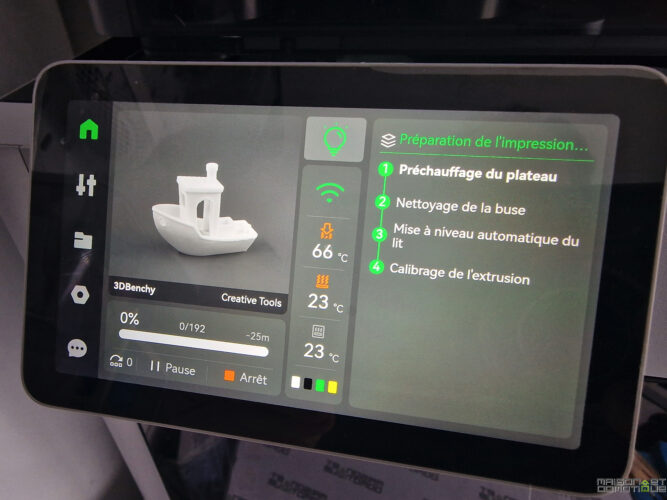
And I'm not talking about a sloppy Benchy with thick layers, no. I'm talking about an impeccable Benchy, with fine details and smooth surfaces.
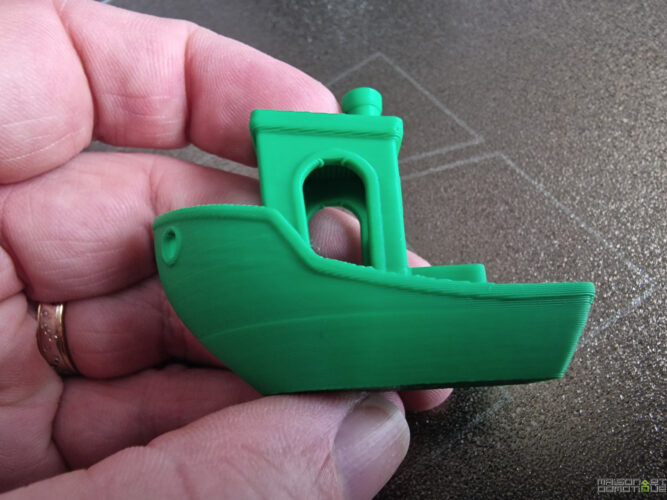
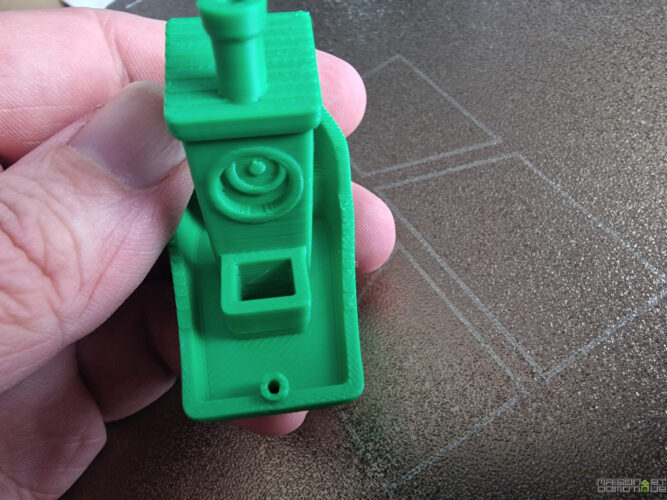
But speed would be nothing without quality, you might say. And you'd be right! Fortunately, the Bambu Lab X1 Carbon excels in this area too. Prints are remarkably sharp, with fine details and smooth surfaces. Corners are sharp, overhangs are clean, bridges are impeccable. It's as if every print came out of a perfect mold.
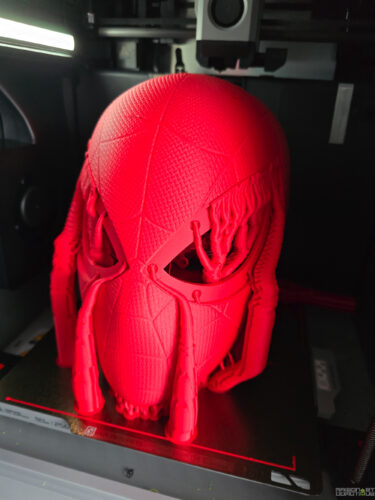
Let's talk a little about dimensional accuracy, because this is a crucial point for many of us. In tests, a 20 mm calibration cube was measured at 20.05 mm x 20.07 mm x 20.03 mm. This is remarkable precision, and places the X1 Carbon among the best in its class. Your parts will fit together like magic!
But what really impressed me was the automatic flow calibration system. The printer itself adjusts the filament flow for optimum results. The result? Consistently thick walls and flawless top surfaces, with no over-extrusion or under-extrusion.
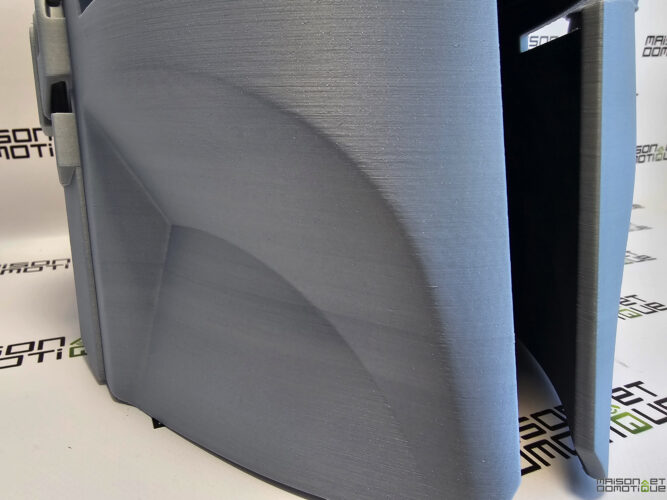
The quality of multi-material prints is also perfect. Thanks to the automatic filament change system (AMS), you can print objects in multiple colors or materials without any manual intervention. Transitions are seamless, with no burrs or contamination between colors. It's like going from black and white to 4K HDR in photography!
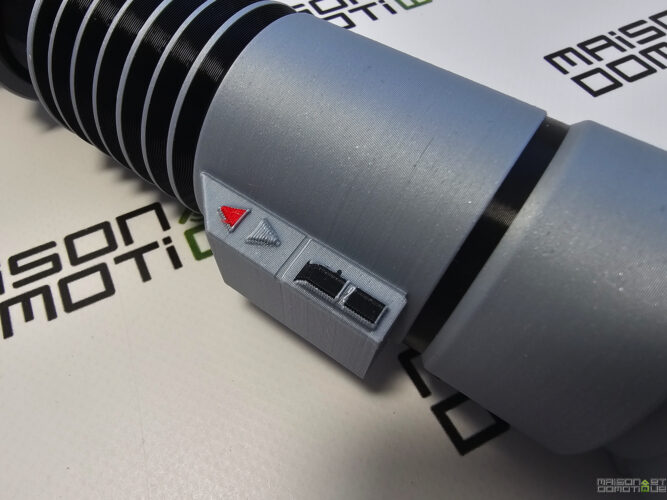
And what about reliability? The Bambu Lab X1 Carbon is a real workhorse. It can handle print after print, day after day. The system for detecting the end of filament and resuming printing after a power cut ensures total peace of mind.
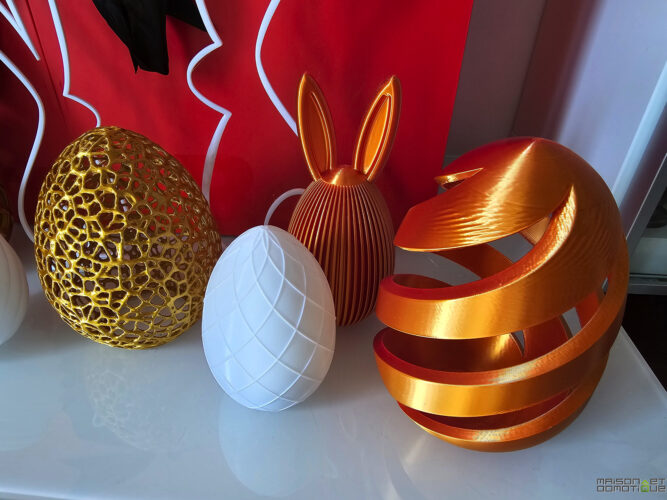
Let's talk about materials. As already mentioned, the X1 Carbon doesn't just print PLA. It brilliantly handles a wide range of technical materials: ABS, PETG, TPU, nylon, PC, ASA… Even filaments loaded with carbon fiber or metal don't scare it. It can adapt to your every need, simply by changing the extrusion head to suit the material.
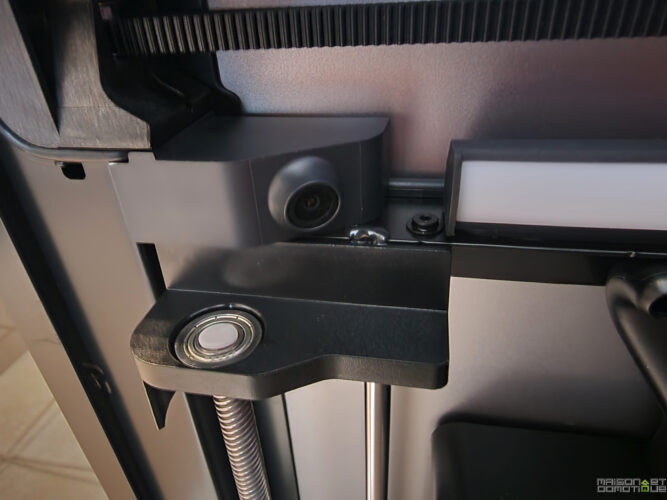
The integrated camera is also worth a mention. Not only does it allow you to monitor your prints from a distance (handy for long prints), it is also capable of automatically detecting printing problems, such as the famous “spaghetti” phenomenon. Thanks to artificial intelligence, it can identify print defects in real time and alert you.
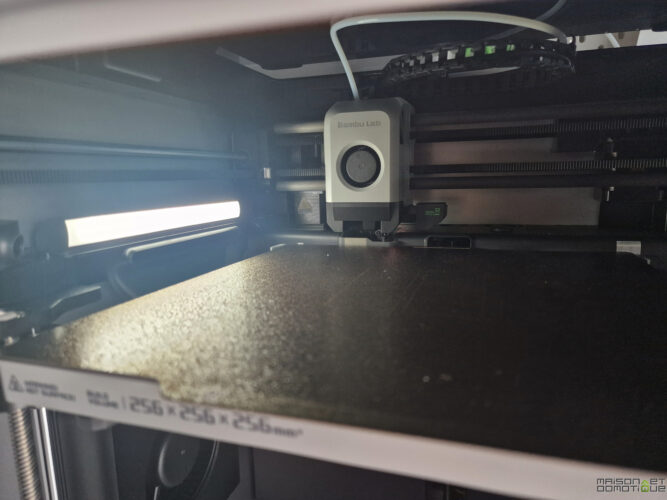
And what about noise? Well, despite its high-flying performance, the X1 Carbon is surprisingly quiet. High-quality stepper motors and a carbon-fiber chassis help reduce vibration and noise. You can easily leave it running in your office without fear of going mad. In fact, it regularly runs behind me while I'm working at the computer, and its noise isn't disturbing.
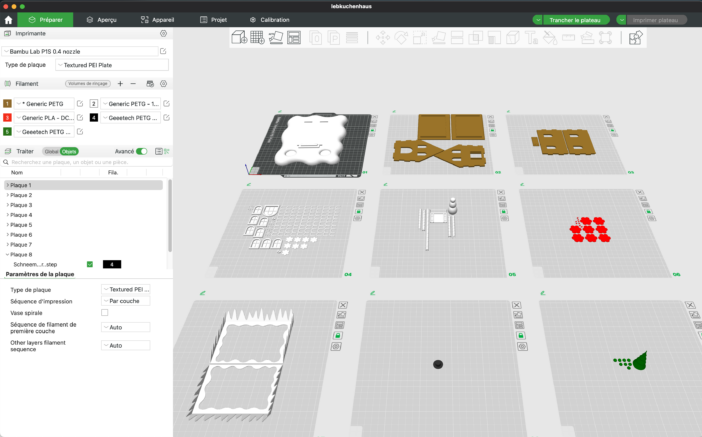
But what really sets the X1 Carbon apart is its software ecosystem. The Bambu Studio slicer is a marvel of ergonomics and power. It incorporates optimized print profiles for each material, intelligent support tools and even sequential printing functions to maximize platen utilization. It's like having an expert co-pilot guiding you through every step of your print job, without having to break your head to place everything as logically as possible.
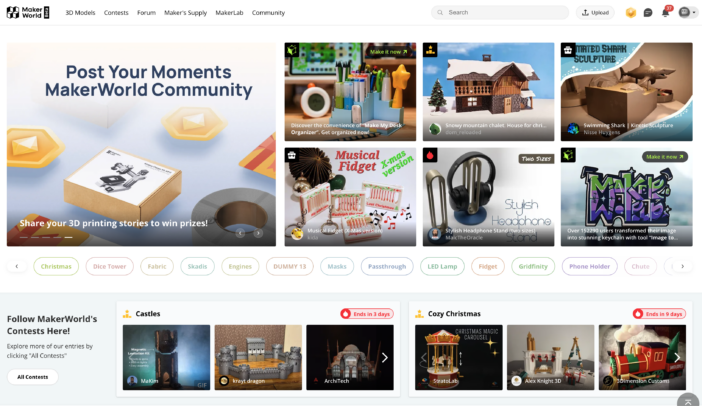
Finally, I can't conclude without mentioning the community that has grown up around the X1 Carbon. The forums are full of passionate users who share their experiences, tips and creations. Every month, Bambu Lab organizes a contest on a particular theme (Christmas, Easter, Halloween, etc.), providing free access to hundreds of high-quality models. One click, and the template is loaded into the Studio software, with settings adapted to your printer. It couldn't be simpler!
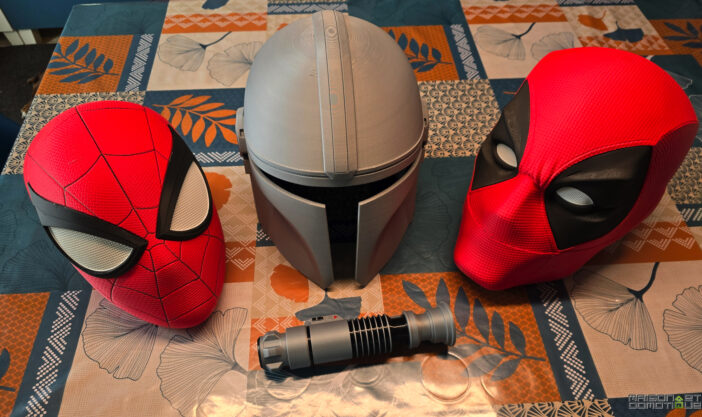
Of course, the printer remains compatible with conventional STL files. The manufacturer's aim is to make the printer as easy to use as possible, while leaving it open-ended enough to use the materials and models you want. Although the manufacturer offers its own spools, any other manufacturer's spool can be used.
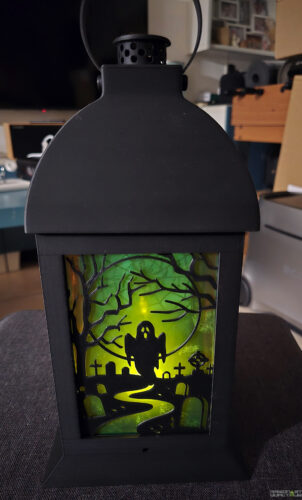



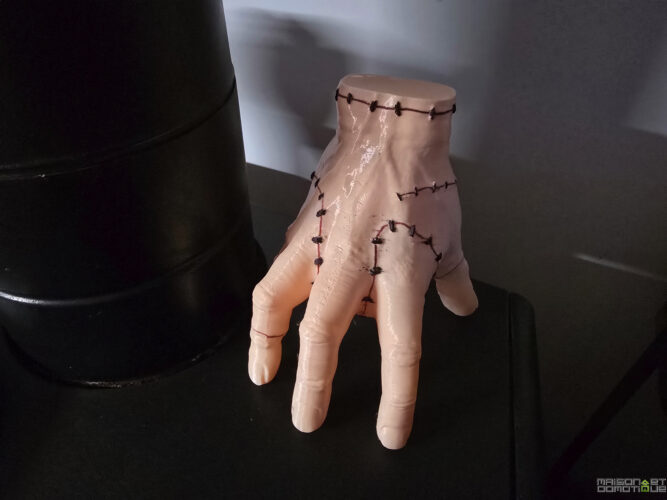
The developers of this printer had set themselves this mission:
We hated 3D printing as much as we loved it.
So we set ourselves 5 goals before embarking on this adventure:
- No more bed-slingers
- No more bloodshed when removing the support
- No more sleeping soundly during night-time printing
- Bring color back to the community
- PA-CF hard parts for my Nerf blaster
To say the least, they succeeded brilliantly!
Conclusion: the future of 3D printing is already here!
The Bambu Lab X1 Carbon isn't just another 3D printer. It's a revolution in the world of additive manufacturing. It redefines what you can expect from a consumer 3D printer in terms of speed, quality and ease of use.
Of course, with a price tag of around €1,200, it's not the cheapest printer on the market. But when you see what it can do, you quickly realize that it's a worthwhile investment. It costs a little more up front, but the quality of the results and the pleasure of use soon make you forget the price.
The Bambu Lab X1 Carbon is designed for both beginners and experienced users. The former will appreciate its ease of use and automated systems, while the latter will delight in its performance and advanced capabilities. It's like having a printer that grows with you, adapting to your needs as you progress.
Ultimately, the Bambu Lab X1 Carbon is more than just a 3D printer. It's a tool that pushes the limits of what you can create at home. It reminds us why we fell in love with 3D printing in the first place: the ability to bring our ideas to life, quickly and easily. And despite the many models I've had the opportunity to test, it's the only one to date that has given me so much pleasure from 3D printing.


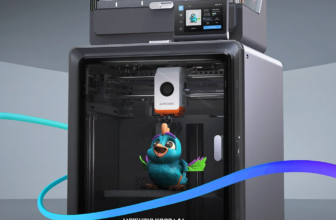
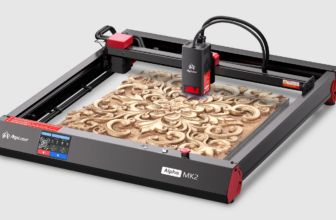

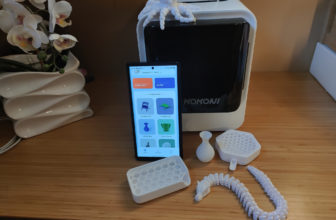

Please remain courteous: a hello and a thank you cost nothing! We're here to exchange ideas in a constructive way. Trolls will be deleted.